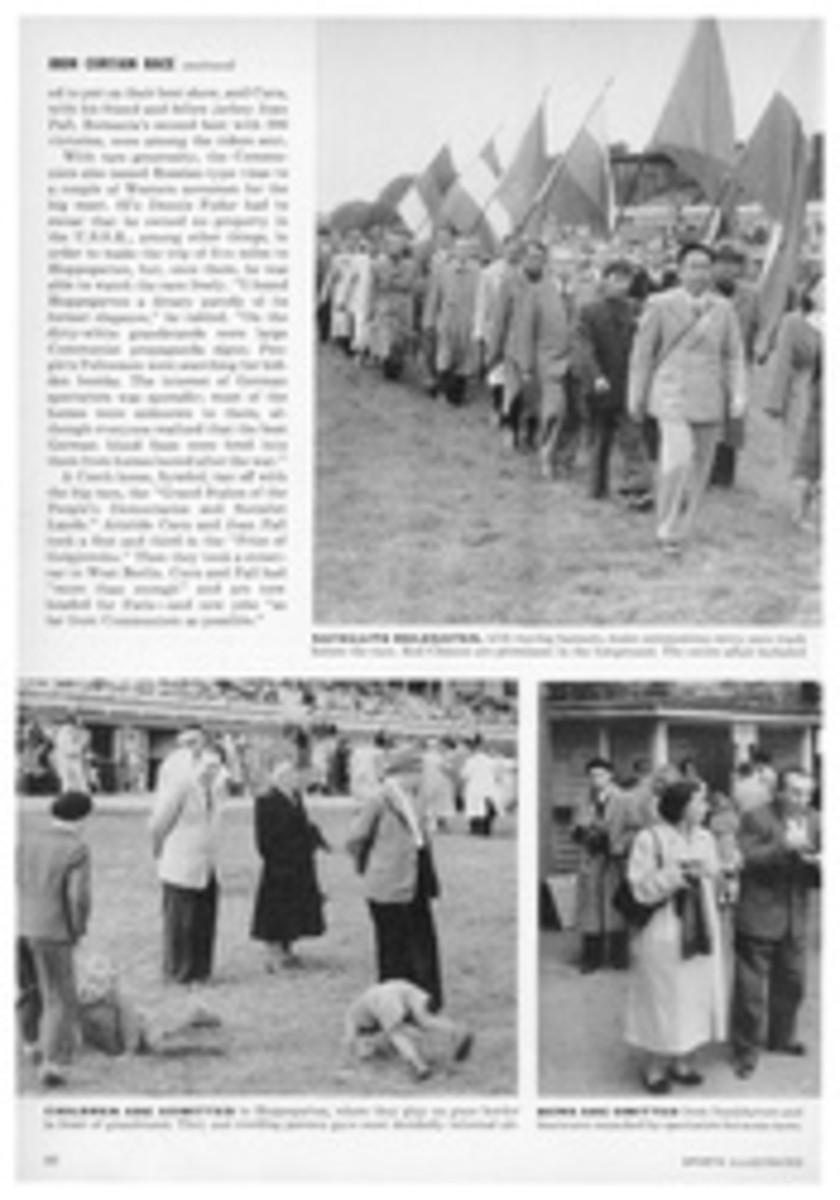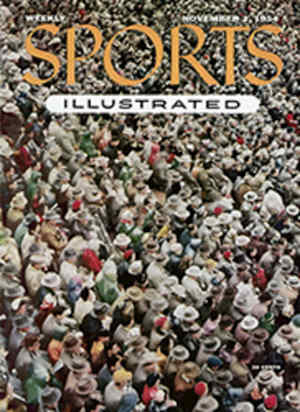
LANCIA'S LATEST UNDER TEST
There is about the Lancia a taut feeling of pent-up vitality not evident to the same extent in any other car except an outright racing job. This unique sensation communicates itself to driver and passenger the moment the engine is started. I was fully aware of it, in fact, as soon as we pulled out of Bill Frick Motors at Rockville Center, Long Island, where I picked up the new Aurelia Gran Turismo model for testing.
The model under test, a light gray aluminum-bodied sedan with cream wheels and gray woolen upholstery trimmed with blue leather, was brand new. The speedometer showed 121 miles and the steering-post shift was arthritically stiff in the joints. Surprisingly, the shift mechanism limbered up after a few miles; but then a certain sponginess and a dead spot between second and third gears made it obvious that a floor shift ($138 extra) is a must for this car. It can be installed with no loss in comfort, since the front seat is divided into two sections (27 inches wide for the driver, including a center armrest; 22 inches for the passenger).
The Lancia's seating position, however, is excellent. It offers a sensible brand of comfort which takes driver alertness into account. The adjustable seat-back, 21 inches high, has a posture curve that gives proper spinal support and makes lolling impossible. You sit upright, relaxed and at ease, with the steering wheel nicely to hand, surveying hood and fenders through a convex tinted-glass windshield that frames 583 square inches of landscape. There is plenty of foot space to the left of the clutch pedal, but with the steering wheel rim only three inches from the driver's door, elbow room is a bit cramped. For so low a car, head room is remarkable. Even a six-footer has over four inches of clearance—enough to wear a hat. Leg room, too, is ample with the seat moved fully back about seven inches; but the rear seat then becomes useless except to a child. At best it is only an occasional affair, with a thinly upholstered blue leather cushion 16 inches deep and a boardlike, upright back. By sliding the passenger seat forward, there is enough knee room for one adult on a crosstown trip, and that's about it.
By American standards, the Lancia's aluminum engine (block, pistons, cylinder head and crankcase) is not quiet, but its deep burble communicates neither resonance nor vibration to the interior. It is a pleasant obbligato to the nervous responsiveness of the gas pedal, and to the sports-car lover it is music. As we bowled along the highway toward Linden Airport, N.J., it was hard to reconcile our deceptively fast gait with the newness of the engine; harder still to limit the revs. to the requested 4,500 (with, later, a rare momentary burst to 5,000 rpm), using the gears for optimum performance.
The Lancia's invitation to scoff at gravitational laws on corners is hard to resist. You know that short of some suicidal maneuver you will not lose control. The featherweight precision of the steering is something out of a Grand Prix race car; so is the new De-Dion rear axle featuring husky inboard-mounted brake drums. The transmission does not form part of the engine as on conventional cars, but is unit-built with the rear axle and bolted to the chassis to reduce unsprung weight. This has been a Lancia feature for years and it results in a tail-end tenacity so remarkable that the rear wheels stay glued to the ground under conditions where centrifugal force would throw most other cars into a violent spin.
Again and again I drove the Lancia in a tight circle, stomping on the gas in second gear at 40 mph until I felt dizzy. Though you couldn't tell this from the inside, there was considerable body lean up to a given point, and the outside front wheel tucked under visibly. But that was all. Steering remained dead true and at no time did the car break loose. Compared to the typical family sedan, the Lancia conveys an extraordinary sensation of safety and—if you don't mind shifting—it is a lot easier to drive. You can pull away in top gear from 20 mph, for instance, without any trouble; and from that speed in third gear the getaway is actually brisk.
Coming back, we breezed up to 92 mph (4,240 rpm) instantly on demand, and at that speed the Lancia seemed to be loafing along. There was a slight front-end tremor at 40 mph due to unbalanced wheels, and the immensely powerful brakes obviously required adjustment and bedding-in; but these are matters for the usual 500-mile checkup.
In a Modifications Memorandum, I would suggest the following: larger rear-view mirror—the present one hides part of the rear window; higher geared window-cranking handles—it is annoying to have to work the handle 10 times to open the window fully; more readable instruments—the present speedometer and tachometer offer poor dial contrast and glass reflection aggravates this fault; the inclusion of an engine temperature gauge—its omission is unforgivable in a highgrade car priced $4,990 plus federal excise tax. Then, the present upholstery is not practical; it will soil in no time. Labels identifying the mysterious array of push buttons adorning the dashboard also would be a help. As to bumpers, the present wrap-arounds look pretty but would never withstand the ramrod impact of Detroit buffers.
Lancia is producing only 500 Aurelia Gran Turismos a year. For enthusiasts seeking the comfort of a sedan with thoroughbred sports-car performance, this handcrafted rate of production makes them all the more desirable.
[originallink:10457076:40832]
PHOTO
INTERIOR IS COMPACT AND PRACTICAL
PHOTO
THROWN SHARPLY AROUND AT 40 MPH, THE LANCIA LEANS WITHOUT GIVING GROUND

